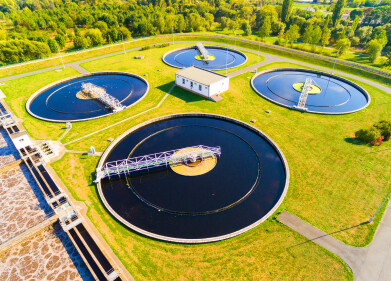Sewage monitoring
Reliable safety in wastewater treatment systems
Apr 08 2020
The Wolfenbüttel wastewater treatment plant, in Germany, is responsible for the purification of approximately 3.2 million m3 of wastewater. In order to treat and purify the wastewater, the ingredients must be removed and separated from the water. For this purpose, there are sewage treatment plants that work with mechanical, biological and chemical processes. During cleaning process, digester gas is produced - a mixture of mostly combustible gases with methane gas CH4 accounting for the largest proportion of it. Digester gas is to be expected to occur in all sewer networks. The PolyXeta®2 sensors from MSR-Electronic not only reliably monitor the sewage treatment plant but also protect people in these areas against dangerous gas concentrations.
In the accident prevention regulation for “wastewater facilities", the safety measures taken against the effects of hazardous gases are a central point. Fortunately, accidents caused by gases happen relatively rarely in sewerage systems. However, in cases when such accidents do occur, several people are usually seriously or even fatally injured.
In order to achieve the highest possible level of gas monitoring, the PolyXeta®2 sensors are polled by a stationary gas warning system directly via a PLC safety controller.
After remote calibration of the highly robust PolyXeta®2 sensors from MSR-Electronic, a precise and stable methane content in the air can be displayed. The measuring method with integrated temperature and drift compensation enables the highest accuracy and reliability combined with a long sensor life. The sensor has a standard 4-20 mA analogue output and two relays with adjustable switching thresholds. In the event of leakage, it is thus possible to warn against the emergence of a flammable gas concentration and to initiate countermeasures in parallel. In this case, the installation and maintenance of the gas alarm system in the sewage treatment plant was carried out by MSR-Electronic’s partner Gawado Gaswarnsysteme.
Bacteria and other micro-organisms can decompose organic substances when supplying oxygen. This decomposition takes place in the "aeration tank", where fresh oxygen is constantly supplied by aeration. In the "secondary settling tank" the sludge produced is separated from the wastewater by settling. This sludge must now be removed and treated further on. It is thickened and pumped into a digestion tower, in which bacteria cause further decomposition by reducing oxygen. This produces combustible methane gas.
With MSR-Electronic’s product range you work preventively against dangers. In addition to state-of-the-art technology, MSR-Electronic also offers consulting and analyses to perfect the safety of your systems, for example, leakages are localised at an early stage.
Digital Edition
IET 35.2 March
April 2025
Air Monitoring - Probe Sampling in Hazardous Areas Under Extreme Conditions - New, Game-Changing Sensor for Methane Emissions - Blue Sky Thinking: a 50-year Retrospective on Technological Prog...
View all digital editions
Events
May 10 2025 Karachi, Pakistan
May 11 2025 Vienna, Austria
May 11 2025 Seoul, South Korea
Salon Analyse Industrielle & Instrumentation
May 14 2025 Paris, France
May 15 2025 Istanbul, Turkey















_(4427399123)-(2).jpg)





